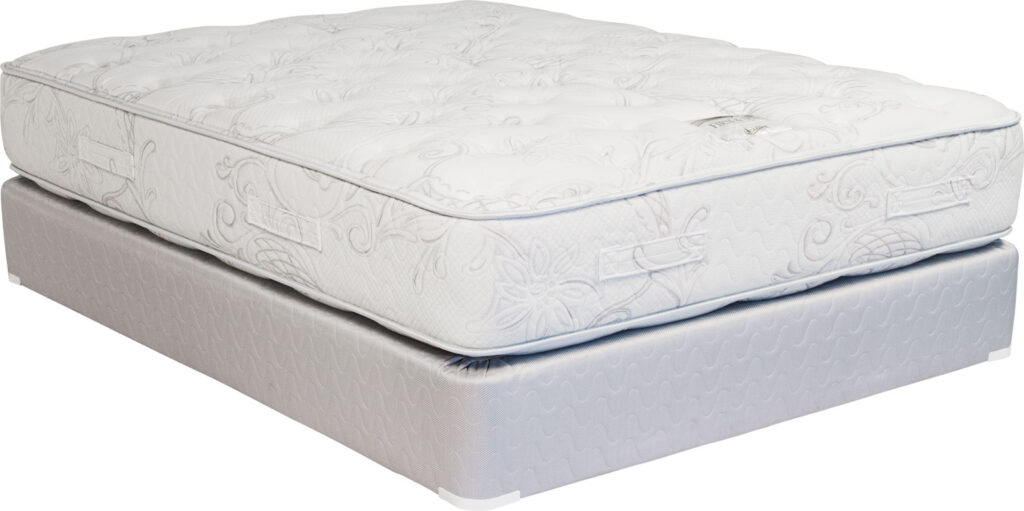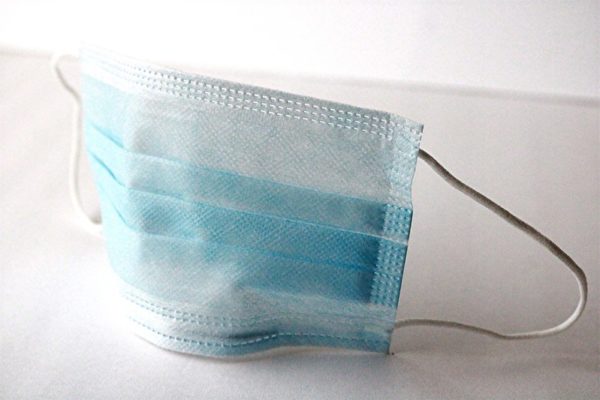
Two-Sided Mattresses: A Brief History
If you’ve been sleeping on mattresses long enough, you might remember when the vast majority of beds used to be two-sided. These mattresses were typically on the thinner side, between 6 to 8 inches, were typically on the firmer side, with a basic, but very strong spring, actual inner-tufting secured with buttons, and were complemented by a box that, at the end of its service life, was still heavy and strong enough to drag a driveway for many years
Oh, how things have changed.
Two-Sided Beds Disappear: Contributing Factors
The 2000s were an interesting time for bedding manufacturers as many influences coincided to create the perfect storm for the propagation of today’s most popular sleeping surface. A shortage of a material called TDI (toluene diisocyanate), a major chemical in the production of foam, including rising oil prices, was causing unprecedented rising costs in the manufacture of foam. Prices were going up in the range of 50-60% overnight. Additionally, fueled by demand from emerging markets notwithstanding China’s immense demand for steel preceding the 2008 Olympics, steel prices continued to rise dramatically.
Yet, what happened in 2007 would overshadow the rest of the industry for years to come. On July 1st, 2007 CFR 1633 went into effect which, in general, stated: “The purpose of the standard is to reduce deaths and injuries associated with mattress fires by limiting the size of the fire generated by a mattress set during a thirty-minute test.“
This standard led to the cost of mattresses going up drastically. The materials they were using were rather expensive and companies decided that one cost-savings measure would be to use the material on just the top and side panels of the mattress resulting in significant cost savings.
Coinciding with rising foam costs, rising steel costs, and an expensive new fire-resistant material, made the 2000s a rough time for the mattress market. Great products that were $399 in a queen set were now $599 and $699 for anything remotely comparable. We had a great example in the early 2000s with the “Generations” mattress from Therapedic. This bed was a two-sided product using high-density foam, an adult support spring, and a heavy-duty semi-flex foundation. We are STILL seeing them out in people’s homes today. Amazing beds. That same bed today would be in the $699-799 range today.
Another important, yet not often mentioned reason for the one-sided switch over, was the introduction of one-sided models before the three major factors. One of the major “S” brands introduced one-sided mattresses as a cost-savings measure. They were spending between 30 to 40% less on these beds, leading much of the rest of the market to follow suit shortly thereafter.
One-Sided Beds: “Never Flip Your Bed Again!”
The first widely produced one-sided beds were, on the whole, junk. Lead by a marketing push of “You don’t have to flip these beds!”, they were initially were insanely popular.
However, foam densities (generally the higher the better) weren’t increased accordingly, leading to products that would develop body-impressions abnormally quickly. This introduction of one-sided beds using poor materials would also help lead to the “all pillowtops are bad” thinking that is so pervasive today. (Read in an upcoming blog).
The initial push was marketing-driven vs economic. (Well, economic if you consider they were spending much less producing the beds with the market-driving effect of higher prices still a few years away). The pitch was to, “Never flip your mattress again!” when in all reality you couldn’t flip your bed. Most other manufacturers were still two-sided at the time, leading some vendors to re-market their tw0-sided lines with “Flip If You Want To” campaigns. Ultimately the pressure of competing marketing and rising prices became too much and the vast majority of the industry went one-sided with just a few years.
One vs. Two: The Great Quality and Durability Argument
First and foremost, it isn’t necessarily whether a bed is one-sided or two that affects the durability. The absolute most important aspect of a quality mattress is the ingredients. Period.
As a testament to the durability of a one-sided mattress, not to mention a pillowtop, is the Touch of Softness Pillowtop by Capitol Bedding in Grand Ledge, Michigan. This one-sided, pillowtop mattress has been the choice of bedding by Grand Hotel on Mackinac Island since 1974. The secret to the Touch of Softness’s durability lies with the construction: a LuraFlex (LFK) spring provides superb support while the 2536 foam (2.5lb 36ILD) along with 1.8lb foam leads the TOS Pillowtop to be one of the most durable mattresses made.
Tw0-sided mattresses could also be flipped and rotated. Two-sided beds from “back in the day” were also usually sold with “torsion” or “true-flex spring” foundations which acted as “shock absorbers” for the mattresses vs semi-flex or rigid wood foundations sold with most mattresses today. These “flexing” foundations absorbed some of the energy directed into the mattress into the foundation instead of being directed right back into the mattress, squishing the materials down even further.
Other solid examples of insanely durable one-sided mattresses include the Therapedic TheraLuxe and Medicoil HD mattresses. These Heavy Duty (HD) lines are made with some of the strongest materials used in mattresses today. Ultra-strong 2.5lb and 3lb density foams combined with a HingeFlex or QLX HD spring and a 50lb compression foam edge support and inner-tufting throughout the entire mattress lead to a mattress made specifically for larger individuals while still providing a 20-year warranty of 1″ of body impression or less, while the rest of the industry is at 10 years and 1.5″. A testament to the durability of these particular one-sided beds.
Planned Obsolescence
A discussion one vs two-sided mattresses wouldn’t be complete without a quick mention of one the biggest banes to consumer products: planned obsolescence. Why not make the product wear out just a bit quicker and make the consumer have to re-enter the market just that much sooner?
We have to admit it, but there’s also a goodly bit of this going on as well. With ad campaigns out there such as “Replace Every 8”, the big retailers are trying to convince you that 1. beds don’t last as long (which is true in m and 2. you need to replace your bed sooner. Well, it’s true that beds, in general, aren’t lasting as long as their older counterparts, but do you really need to replace it “Every 8?”
The short answer is No.
Our philosophy is that you should only replace a bed as-needed, which means you should only replace your bed when it is starting to affect the quality of your sleep. If you’re waking up with some aches and pains, it might be time to re-evaluate your sleep surface. However, if you’re sleeping like a baby on a 20-year-old bed, why replace it?? There is no reason to replace something comfortable for something new, just because an advertisement from an overly-large retailer’s ad campaign tells you so.


